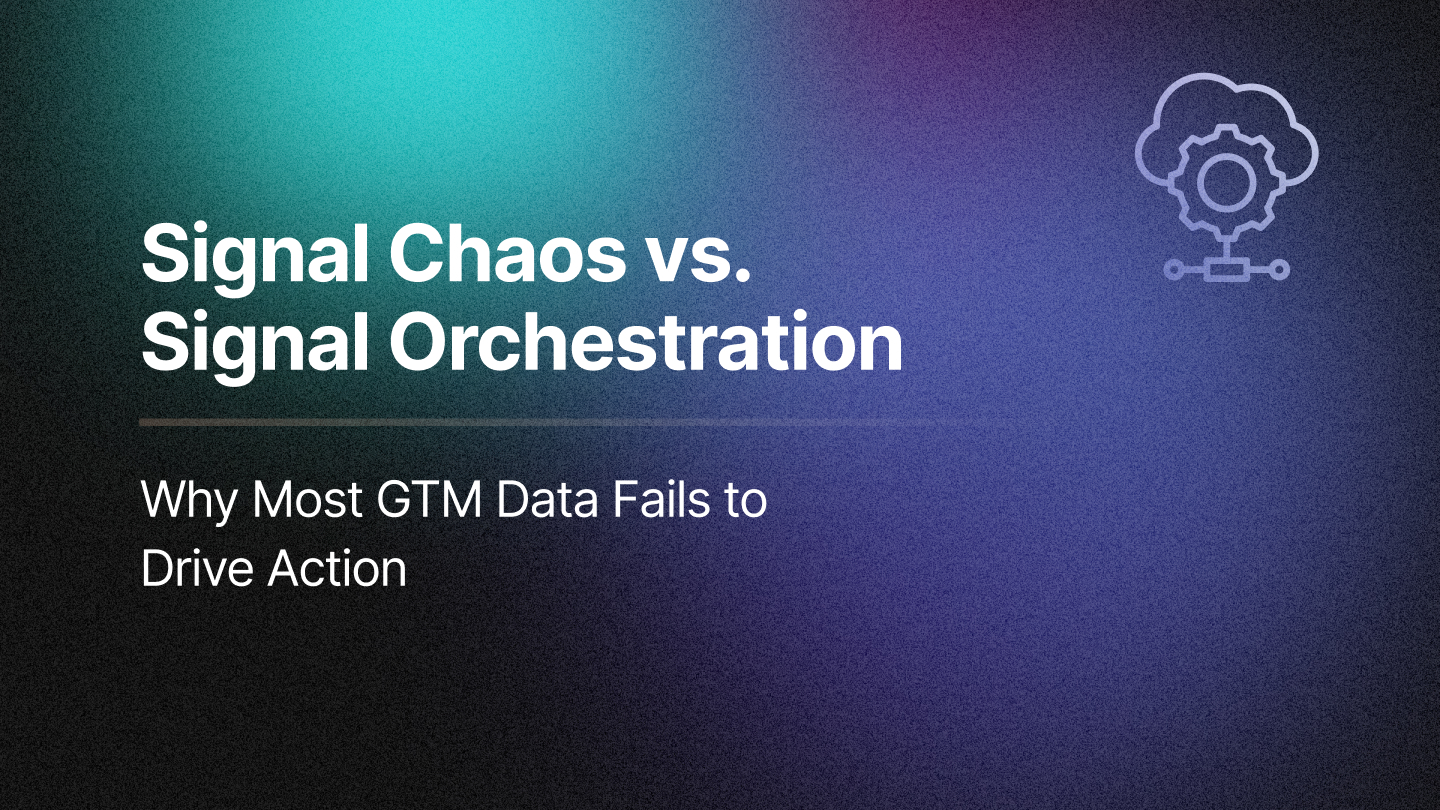For decades, GTM teams have relied on annual or semi-annual marketing plans to bring order to the chaos of execution. Budgets are finalized months in advance, targets are fixed, and campaign calendars are neatly outlined for the year.
It looks methodical on paper, but the market rarely plays along. Buyer priorities shift. Channels evolve. Campaigns that performed brilliantly at launch can quickly lose efficiency. Yet teams often stay tethered to the original blueprint, adjusting only after shortfalls or overspend become impossible to ignore.
The problem isn’t the intent to plan; it’s the rigidity of those plans in an environment where change is constant. When the market moves weekly, annual frameworks built for stability become a drag on adaptability.
Why Traditional Planning Breaks Down
Traditional planning assumes predictability, but today’s GTM landscape is shaped by volatility. Several factors make fixed frameworks increasingly ineffective:
- Channel performance fluctuates. What delivered strong ROI last quarter may decline mid-year as audience fatigue sets in or algorithms shift.
- Buyer behavior evolves rapidly. Digital engagement patterns change across platforms faster than most dashboards can refresh.
- Pipeline velocity varies. Economic uncertainty, competitive moves, and changing customer cycles all affect deal flow.
- Budget adjustments are slow. Reallocation typically happens only during quarterly reviews, long after leading indicators flag a change.
By the time course corrections are made, opportunities have passed and investments are already sunk. The plan that once created clarity ends up constraining responsiveness.
Predictive Planning: A New Operating Rhythm
Predictive planning replaces the static annual rhythm with an adaptive, data-informed cycle that anticipates change rather than reacts to it. Instead of forecasting once and defending assumptions all year, teams operate on continuous modeling loops.
Performance is tracked against goals in near real time. Predictive indicators highlight early shifts in conversion velocity or channel effectiveness. Budgets are adjusted dynamically as the quarter unfolds, allowing execution to stay aligned with reality.
This doesn’t mean abandoning long-term strategy; it means complementing it with operational flexibility. Predictive planning introduces agility without sacrificing accountability.
How Predictive Planning Works
Predictive planning operates through three interconnected layers that function as a closed loop:
1. Leading Indicators and Predictive Models
Teams move beyond lagging outcomes like closed revenue to track leading signals: pipeline coverage, conversion rates, and engagement trends. Predictive models surface deviations early, offering the lead time to act before performance gaps widen.
2. Scenario Modeling Environments
Instead of committing to one path, teams simulate multiple allocation options. “What if” modeling enables quick assessment of outcomes when shifting budgets between regions, segments, or channels. Decisions become informed experiments rather than rigid bets.
3. Continuous Optimization
Insights turn into action through frequent, smaller reallocations instead of quarterly overhauls. The process becomes iterative: adjust, observe, and refine—so resources are always pointed toward what’s working now.
Strategic Advantages of Predictive Planning
Teams adopting predictive planning don’t just react faster; they operate more intelligently and cohesively:
- Earlier visibility into risks and opportunities enables proactive intervention before performance drops.
- Smarter budget allocation ensures spending follows current results, not outdated forecasts.
- Greater organizational agility replaces reactive pivots with continuous optimization.
- Improved cross-functional alignment keeps Marketing, Sales, and Finance working from shared, transparent models.
The outcome is better pipeline consistency, steadier forecasting, and more resilient GTM execution, especially in unpredictable markets.
What Teams Need to Make the Shift
Predictive planning isn’t a single platform or model; it’s a discipline supported by foundational enablers. Teams need high-quality, timely data that reflects what’s actually happening in the funnel, not what happened last quarter. They need flexible modeling environments that allow for quick comparison of scenarios and outcomes. And they need clearly defined governance, thresholds, roles, and approval structures, to ensure agility doesn’t turn into disorder.
When these foundations are in place, predictive planning becomes second nature: a cycle of sensing, simulating, and shifting that keeps the GTM motion continuously calibrated to reality.
How RevSure Enables Predictive Planning
RevSure is purpose-built to operationalize predictive planning across the GTM funnel. Its Full-Funnel AI Platform brings together unified data, predictive modeling, and automated reallocation capabilities so teams can plan, monitor, and continuously optimize, not just annually.
At the core is RevSure’s Data Platform and AI Engine, which connects marketing performance data, pipeline metrics, and revenue outcomes to model how today’s activities shape tomorrow’s results.
- Signal Detection: RevSure continuously tracks leading indicators, conversion velocity, funnel health, and spend efficiency to surface early risks and opportunities.
- Scenario Modeling: Teams can simulate spend reallocations, test ROI curves, and compare potential outcomes before committing resources.
- Dynamic Reallocation: Through connected dashboards, RevSure enables ongoing optimization, adjusting budgets, prioritizing campaigns, and refining strategy based on live performance signals.
By replacing static reports with living predictive models, RevSure empowers GTM teams to make faster, smarter, and more confident decisions. Planning becomes a proactive advantage, not a reactive process.
Planning That Keeps Pace
Annual plans were built for a slower world. In today’s fluid GTM landscape, they struggle to keep up. Predictive planning brings agility, foresight, and data-driven precision to how teams set goals and deploy resources.
By continuously modeling performance, identifying early shifts, and adjusting intelligently, GTM leaders move from reactive firefighting to proactive orchestration.
At RevSure, this philosophy powers our predictive planning approach, helping organizations replace lagging reactions with forward-looking decisions. Because in a market that moves fast, the only plan that works is one built to adapt.
Related Blogs







